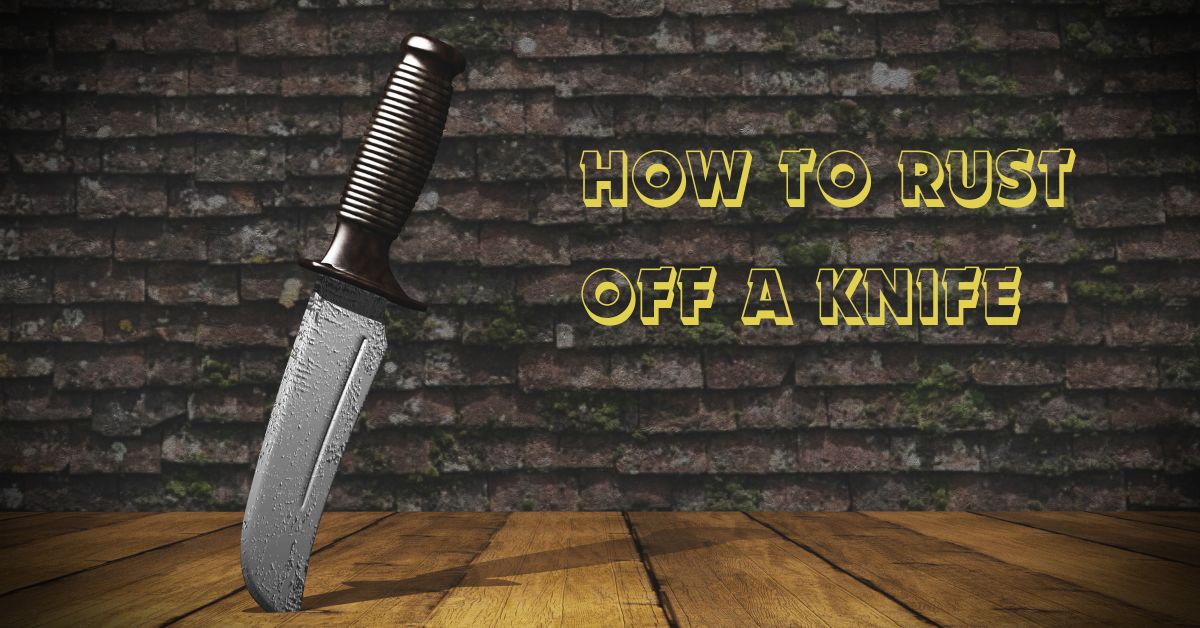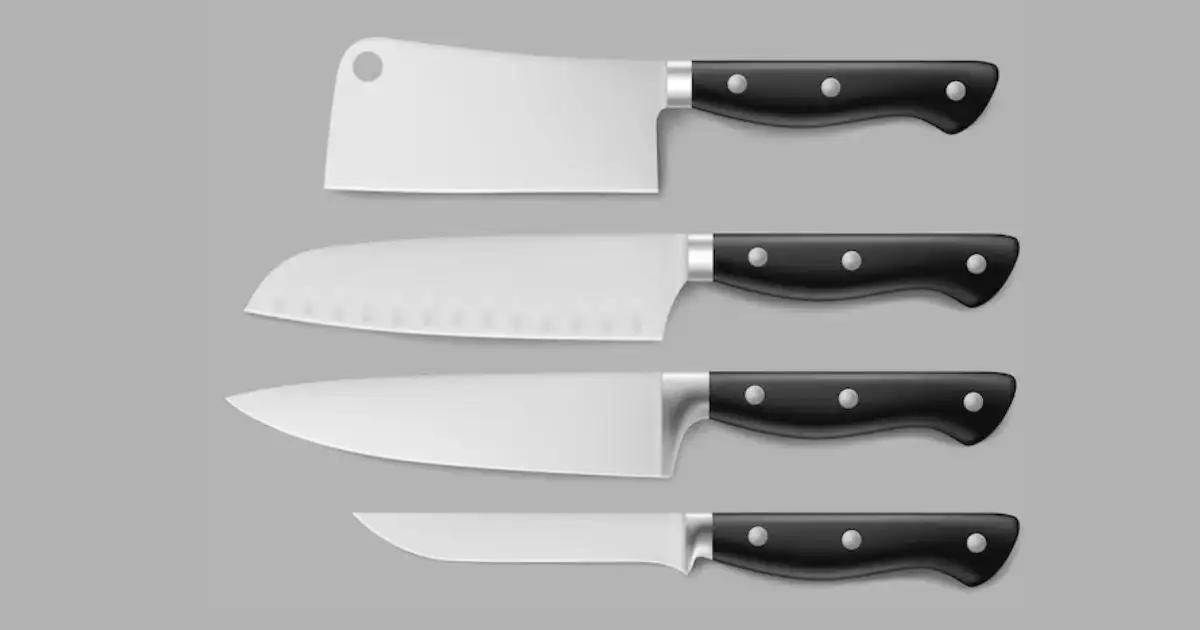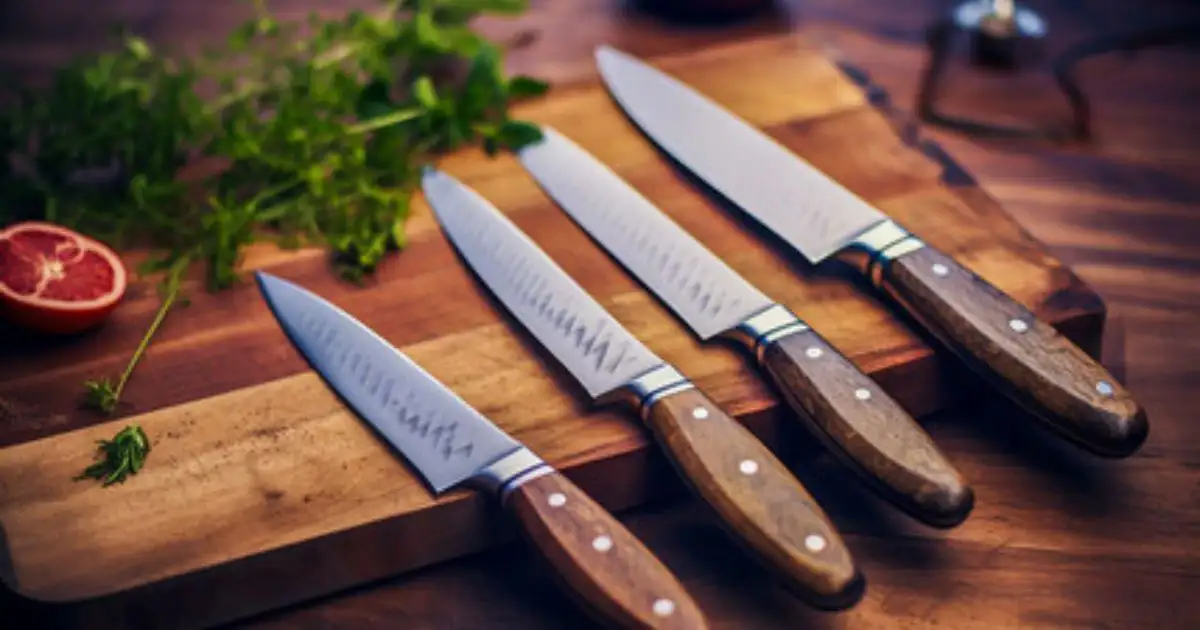Top 5 Rust off a Knife Methods: Bringing your knife back to life
Table of Contents
ToggleIntroduction
A well-kept knife is a chef’s most useful instrument in the kitchen, and employing one can significantly improve your culinary adventures. But sometimes your trusty knife begins to show signs of negligence, such as the dreadful rust spot that shows on the blade. Rusting off a knife not only damages the knife’s appearance but also compromises its performance and longevity.In this blog guide, we’ll talk about the cleanliness of knives, which is the most important part of the kitchen. Cleaning rust off a knife may seem like a difficult task, but fear not; with the right use of different techniques and patience, you can give new life to your beloved blades. If you’re a home cook or professional chef who needs and always prefers a sharp, rust-free tool that may ease your task, this blog post will provide you with the knowledge and skills to keep your knives in good condition.We’ll discuss some important steps that are required to remove rust from a knife, recommend special tools and materials, and share some valuable maintenance tips to ensure your knives stay rust-free in the future. So, let’s get our hands dirty and ready to prepare to give your reliable kitchen and outdoor partner back their sharpness.
Encouraging Safety Measures During the Rust off Process:
Safety Equipment
- Gloves: Always use protective gloves to prevent cuts and avoid direct contact with rust and cleaning materials.
- Safety Goggles: Protect your eyes from any debris or rust particles that might dislodge during the cleaning process.
- Apron or Protective Clothing: Wearing appropriate clothing can prevent stains and protect your body.
Workspace
Well-ventilated Area: Work in a well-ventilated space to avoid inhaling fumes from cleaning materials.
Flat and Stable Surface: Ensure your workspace is stable to prevent accidents while handling sharp knives.
- Clean and Organized: Keep your workspace organized to minimize the risk of accidents due to clutter.
- III. Knife Handling
- Secure the Knife: Ensure the knife is properly secured during the cleaning process, so it doesn’t accidentally slip or fall.
- No Rush: Take your time when handling the knife, especially when using abrasive materials.
- Keep the Sharp Edge Away: Always keep the sharp edge facing away from your body and hand.
Cleaning Materials
- Read Labels: Follow the instructions on cleaning materials carefully and be aware of any hazards they may pose.
- Keep Away from Children: Store cleaning materials out of the reach of children and pets.
- Disposal
- Rust and Cleaning Residues: Properly dispose of rust and cleaning residues following local regulations. Do not leave them where they can cause harm or stain surfaces.
Emergency Preparedness
- First Aid Kit: Have a first aid kit on hand with items for treating minor injuries.
- Emergency Contacts: Know how to contact emergency services in case of accidents.
Cautions
- Avoid Abrupt Movements: Make deliberate, controlled movements while working on the knife.
- Avoid Excessive Force: Do not apply excessive force when scrubbing rust, as it may damage the knife or cause accidents.
Advantages of rusting off a knife:
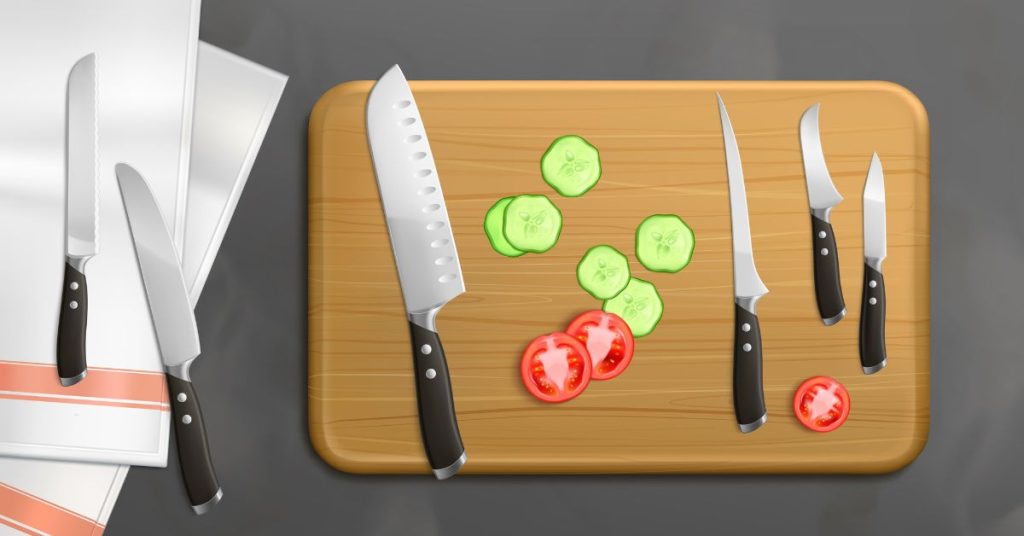
Preserves Knife Performance: Rust on a knife can damage the sharpness of the knife and also its cutting efficiency. Removing rust restores the blade performance and ensures clean and precise cuts.
Prolongs Knife Lifespan: Regularly removing rust and maintenance can significantly extend the life of your knife. It also prevents further corrosion and makes the knife a valuable kitchen tool for years to come.
Enhances Food Safety: A rusty knife can pollute your food which is dangerous for health, So cleaning the rust promotes food safety by eliminating this risk.
Saves Money: Proper cleaning and maintenance reduces the chances of replacing your beloved knife. Another important factor is that it saves your money on replacements and maintains the value of your investment.
Improved Aesthetics: Rust can be unsightly and detract from the visual appeal of your knives. Cleaning the rust restores their appearance, ensuring they look well-maintained and presentable.
Safe Handling: Rust can create rough or uneven surfaces on the blade, making it more hazardous to handle. Removing rust ensures a smooth, safe surface for gripping and using the knife.
What factors lead to rust off on a knife?
Rust can form on a knife for several reasons, and it’s important to understand these factors to prevent and address rust effectively. Here are the main reasons for rust forming on a knife:
High Humidity: High humidity in the environment, such as in the kitchen area and the storage area, can be affected by moisture in the air. This moisture promotes the chemical reaction that causes rust.
Acidic Foods: Many fruits have high acidity like tomatoes, citrus fruits, vinegar, etc. When these foods are cut with a knife and not properly cleaned after use, they can cause corrosion
Improper Cleaning and Drying: When a knife is not properly cleaned and dried after use, food particles and water may remain, which may cause rust to grow in large quantities.
Dishwasher Usage: Dishwashers also cause rust. because dishwashers have high detergents and temperatures, which can damage the knife’s protective coatings.
Neglect and Lack of Maintenance: Failing to maintain and care for your knives can lead to rust. Neglected knives are more likely to suffer from corrosion and damage.
Environmental Factors: Environmental conditions, such as being located near a coast where saltwater air is prevalent, can increase the risk of rust on knives.
Guidelines for maintaining tips to rust off a knife:
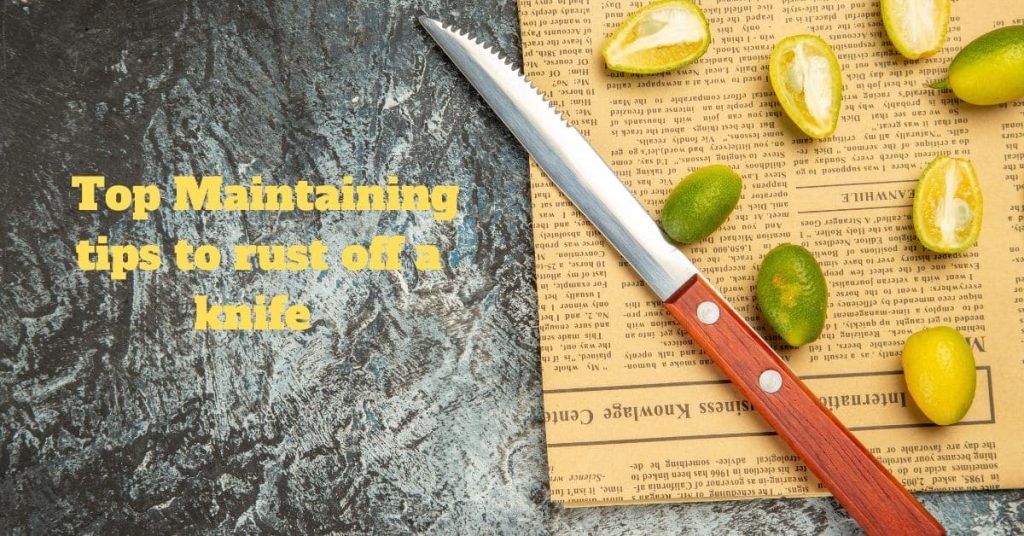
- Clean your knives after using them to prevent food residues from promoting rust
- Do not use a dishwasher which has high heat and moisture that can lead to rust
- After washing, use a clean towel to dry the knife completely.
- Ensure there are no moisture or water spots left on the blade.
- To store your knives, always use a knife block, magnetic strip, or blade guard.
- Acidic foods like tomatoes and citrus can promote rust.
- Wipe the knife dry after cutting these foods.
- Use cutting boards made of wood, plastic, or soft materials to avoid damaging the knife’s edge.
- Routinely check your blades for any signs of rust.
Educating others helps maintain the knife’s condition.
Conclusion
When it comes to culinary art, a well-kept knife, which is considered the hero of every kitchen, plays a vital role for both home and professional cooks due to its precision, shiny surface, and sharp blade. However, even the finest blades can fall victim to the relentless march of rust if not properly cared for. But do not worry In this blog, we discuss the step-by-step process of removing rust and its safety precautions in detail, so you can properly save your knife. If you have patience, then you can bring back the shine and sharpness of your knives.Always remember that if you maintain the kitchen knife, you must keep it from rusting. Regular cleaning and drying after cleaning and storing it in its rack In this way, you save your knife and money.
FAQ
1: Why does rust form on my knife in the first place?
Answer: Rust forms on knives due to exposure to moisture and oxygen. When the metal blade is not adequately dried or stored in a humid environment, it’s susceptible to oxidation, leading to rust formation.
2: Can I use regular kitchen cleaning products to remove rust from a knife?
Answer: Yes, you can use regular kitchen products like white vinegar, lemon juice, and baking soda to remove rust from a knife. Avoid harsh chemicals that could damage the knife or be unsafe for food preparation.
3: Is it safe to consume food prepared with a knife that has rust on it?
Answer: If you’ve thoroughly cleaned and removed all rust from the knife, it should be safe to use for food preparation. However, it’s essential to inspect the knife carefully and ensure no rust or residue remains.
4: Can I use an abrasive scouring pad to rust off my knife?
Answer: While an abrasive pad like steel wool can be used, it should be fine-grade, and you should be gentle to avoid scratching or damaging the knife’s surface. It’s often better to start with milder methods, such as a rust eraser or vinegar paste and baking soda.
5: How often should I oil my knife to keep the rust off?
Answer: The frequency of oiling your knife depends on usage and storage conditions. For kitchen knives, it’s a good practice to apply a thin coat of food-safe lubricating oil after every use, especially if the knife will be stored for an extended period of time. Outdoor knives may require more frequent maintenance due to exposure to harsher conditions.
These FAQs and answers should help address common concerns and provide clarity to readers looking to clean rust off their knives effectively.

